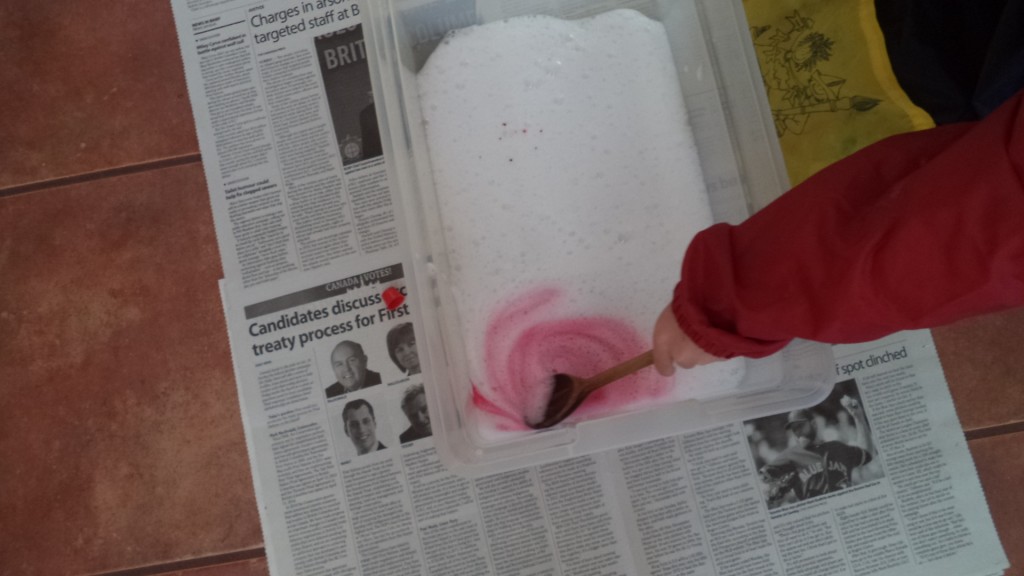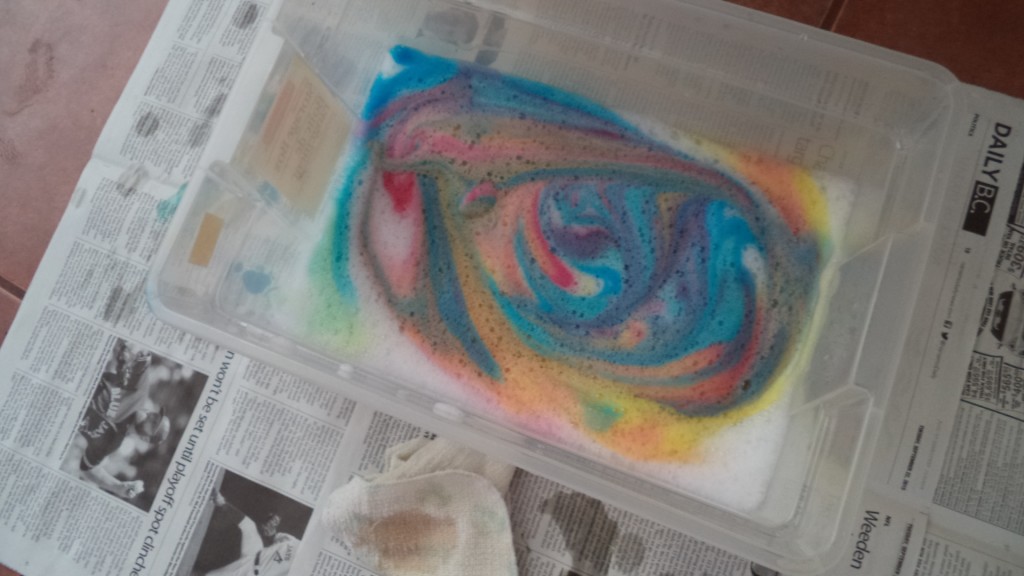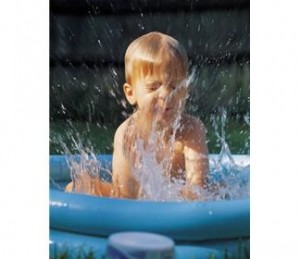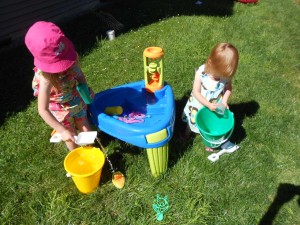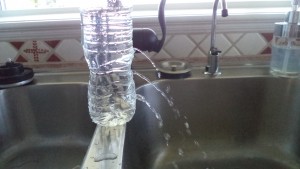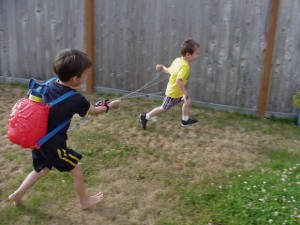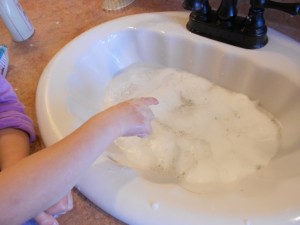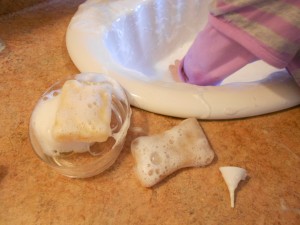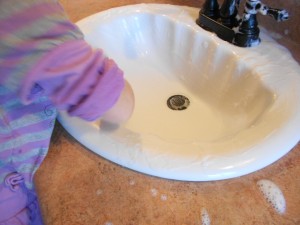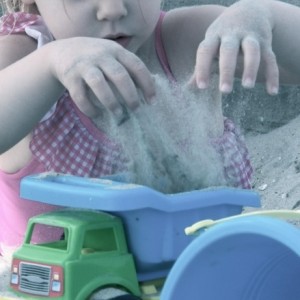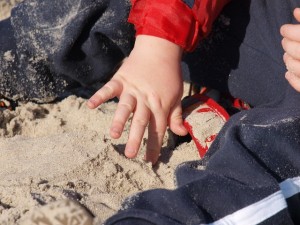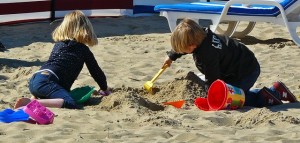How about some color and sensory play? Color play has included science, math, songs, games, puzzles, cooking, stories, relationships, and thinking skills. Color fun has been both inside and outside, suitable for preschoolers of different ages. To finish a whole month of Colors of Childhood, here is a soap foam rainbow that comes with the cleanup built in.
Young children need play that engages their senses. For some sensory fun, we mixed up some batches of foamy soap bubbles. Not all dish washing liquids are created equal. While Dawn and Joy are often used in bubble soap recipes, we made this foam with a store brand. On high speed, we blended 2 tablespoons of dish liquid in 1/4 cup of water. We didn’t get stiff peaks but we did get lots of foamy soap which we poured into a big, plastic container. **It’s better to make several small batches otherwise the soap will spill out of the blender and cover the counter. Think of what happens when someone accidentally uses dish soap instead of special dishwasher soap.
Just in case, the floor had a few layers of newspaper and Little Sister wore a paint shirt. To make the rainbow, squirt a few drops of food coloring onto the soap. **Food coloring can stain depending on what it squirts onto. No matter how carefully I squeezed out a few drops, somehow when taking the lid off or putting it back on I managed to turn my fingers into a rainbow. However, once the colors got even slightly mixed with the foam, it didn’t stain during play.
Little Sister commented that the soapy foam felt like a warm bubble bath. She first mixed the colors with a wooden spoon, but soon used her fingers and then her hands. The color mixes very quickly with the soap foam and creates the most amazing swirls. After lots of play, the colors are mostly mixed together. Adding in a new batch of some plain white foam is almost as exciting as the rainbow. Sensory experiences support children’s development in so many ways. Isn’t this a great way for kids to learn colors and enjoy some messy play?

